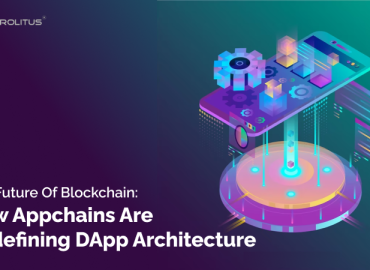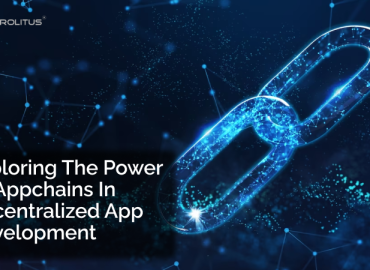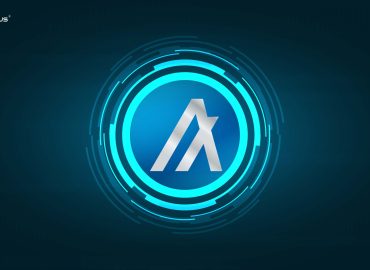Introduction to DApps
DApps, or Decentralized Applications, are software applications built on decentralized networks such as blockchain. Unlike traditional centralized applications, DApps have no central point of control and are run by a network of users, making them more secure, transparent, and resistant to censorship.
DApps can be used for various purposes, from finance and governance to gaming and social networking. They enable peer-to-peer transactions without intermediaries, significantly reducing transaction costs and increasing efficiency.
DApp development has gained popularity in recent years, with many developers and organizations exploring the potential of this technology. However, to build DApps, developers need to use specialized tools and frameworks designed to work with decentralized networks.
In this article, we will explore the best practices for developing DApps using tools and frameworks and highlight the key considerations developers need to consider when building decentralized applications.
Importance of Tools and Frameworks in DApp Development
Tools and frameworks play a crucial role in DApp development. Decentralized applications are built on blockchain technology, requiring specialized knowledge and expertise. Tools and frameworks help developers to streamline the development process, reduce the learning curve, and improve the quality of the final product.
Here are some of the key benefits of using tools and frameworks in DApp development:
- Speed up development: DApp development can be time-consuming and complex, especially for developers new to blockchain technology. Tools and frameworks can speed up the development process by providing pre-built modules and components that can be easily integrated into the application.
- Ensure quality: Tools and frameworks often come with built-in testing and debugging tools that can help developers identify and fix issues early in development. This can help improve the final product’s quality and reduce the risk of errors and bugs.
- Facilitate collaboration: DApp development often involves multiple developers working together on the same project. Tools and frameworks can facilitate collaboration by providing a common set of tools and processes that all team members can use.
- Enhance security: Security is a critical consideration in DApp development. Tools and frameworks can help enhance the application’s security by providing built-in security features and best practices for secure coding.
Using tools and frameworks can help to streamline the development process, improve the quality of the final product, and reduce the risk of errors and security vulnerabilities.
Choosing the Right Tools and Frameworks for DApp Development
Choosing the right tools and frameworks is critical for successful DApp development. Here are some factors to consider when selecting tools and frameworks for DApp development:
- Compatibility: Ensure that the tools and frameworks you choose are compatible with the blockchain platform you are using. Different blockchain platforms may have different programming languages and frameworks, so choosing tools and frameworks that work well with your chosen blockchain is essential.
- Security: Security is a critical consideration in DApp development. Look for tools and frameworks with built-in security features and follow best practices for secure coding.
- Community Support: Look for tools and frameworks with a strong community of developers who can provide support and share knowledge. This can be especially important for developers who are new to blockchain technology.
- Documentation: Look for tools and frameworks that have thorough documentation and examples. Good documentation can help developers to learn how to use the tools and frameworks more quickly and effectively.
- Scalability: Consider the scalability of the tools and frameworks you choose. Some tools and frameworks may be better suited for smaller-scale DApps, while others may be more appropriate for large-scale applications.
- Development Time: Consider the development time required for the tools and frameworks you choose. Some tools and frameworks may be quicker to set up and use, while others may require more time to learn and configure.
- Cost: Consider the cost of the tools and frameworks you choose. Some tools and frameworks may be free and open source, while others may require licensing fees or other costs.
Overall, it is important to choose the best frameworks for Daap development that are well-suited to the specific needs of your DApp. Consider factors such as compatibility, security, community support, documentation, scalability, development time, and cost when making this decision.
Top Tools and Frameworks for DApp Development
There are many tools and frameworks available for DApp development, but here are some of the most popular and widely-used:
- Truffle: Truffle is a popular development framework for Ethereum that provides a suite of tools for smart contract development, testing, and deployment.
- Remix: An online IDE (integrated development environment) for Ethereum allows developers to write, test, and debug smart contracts in a web browser.
- Ganache: Ganache is a personal blockchain for Ethereum development that allows developers to create and quickly test Ethereum networks locally.
- Web3.js: Web3.js is a JavaScript library for interacting with Ethereum nodes and smart contracts. It provides a simple and intuitive API for developers.
- Embark: Embark is a development framework for Ethereum and IPFS that provides tools for smart contract development, deployment, and testing.
- OpenZeppelin: OpenZeppelin is a library of secure and audited smart contracts for Ethereum that can be used as building blocks for DApps.
- IPFS: IPFS (InterPlanetary File System) is a distributed file system that can be used for decentralized storage and content addressing. It can be integrated with Ethereum DApps to provide decentralized data storage.
- Solidity: Solidity is a programming language for writing smart contracts on the Ethereum blockchain. It is the most widely-used language for Ethereum DApp development.
Overall, these tools and frameworks can streamline the DApp development process, improve the quality of the final product, and reduce the risk of errors and security vulnerabilities.
Testing and Deployment Best Practices for DApps
Testing and deployment are critical phases in DApp development. Here are some best practices to consider for testing and deployment:
- Test Early and Often: Testing should begin early in the development process and should be conducted frequently. This can help to identify and address issues early on, reducing the risk of bugs and vulnerabilities in the final product.
- Use a Testnet: A testnet is a separate blockchain network designed for testing purposes. Using a testnet can help to isolate testing from the main network, reducing the risk of unintended interactions and minimizing the impact of bugs and vulnerabilities.
- Use Automated Testing: Automated testing can help to streamline the testing process and reduce the risk of human error. Tools like Truffle and Remix provide automated testing capabilities for DApps.
- Conduct Comprehensive Testing: Comprehensive testing should include unit, integration, and functional testing. This can help ensure that the DApp functions as intended, is secure, and meets users’ needs.
- Conduct Security Audits: Conducting a security audit can help to identify potential vulnerabilities and reduce the risk of attacks and theft. Third-party auditors can provide an objective review of the DApp’s security posture.
- Use Version Control: Version control, such as Git, can help manage changes to the DApp and ensure that changes are tracked and documented.
- Deploy to a Mainnet: After testing is complete, the DApp can be deployed to the mainnet for public use. It is important to ensure that the DApp is thoroughly tested and audited before deployment to reduce the risk of security incidents.
- Monitor for Issues: After deployment, the DApp should be monitored for bugs, vulnerabilities, and performance issues. Monitoring can help to identify and address problems quickly, reducing the impact on users and the integrity of the DApp.
By following these testing and deployment best practices, DApp developers can improve their applications’ quality and security and help ensure their success.
Security Considerations for DApps
Security is critical for DApps, as they are built on decentralized and distributed systems and often involve sensitive data and valuable assets. Here are some key security considerations for DApps:
- Secure Contract Design: Contracts are the backbone of DApps and must be designed with security in mind. The code should be audited and reviewed for vulnerabilities before deployment.
- Access Control: Access control mechanisms should be implemented to ensure that only authorized users can interact with the DApp. This can include authentication and authorization mechanisms, such as user roles and permissions.
- Input Validation: Input validation is essential for preventing malicious inputs that could exploit vulnerabilities in the DApp. The developer should implement input validation for all user input, including contract calls and user data.
- Secure Data Storage: Sensitive data, such as private keys and user data, should be stored securely. This can include using encryption and secure storage mechanisms, such as hardware wallets.
- Consensus Algorithms: DApps rely on consensus algorithms to validate transactions and ensure the integrity of the blockchain. Choosing a secure and reliable consensus algorithm, such as Proof of Work (PoW) or Proof of Stake (PoS), is essential.
- Immutable Transactions: Transactions on the blockchain are immutable, meaning they cannot be changed or deleted. It is essential to ensure that transactions are accurate and error-free before they are executed.
- Smart Contract Upgradability: Smart contracts can be upgraded to fix bugs or add new features, which can also introduce vulnerabilities. Upgrades should be thoroughly tested and audited before implementation.
- Auditing: Regular auditing of the DApp’s code and infrastructure can help to identify vulnerabilities and improve the security posture of the DApp.
By considering these security considerations and implementing best practices for secure DApp development, developers can help ensure their applications’ integrity and security.
Future of DApp Development and Emerging Tools and Frameworks
The future of DApp development is exciting as blockchain technology and decentralized systems continue to evolve and mature. Here are some emerging tools and frameworks that are shaping the future of DApp development:
- Polkadot: Polkadot is a next-generation blockchain platform that allows multiple blockchains to interoperate, enabling seamless communication between different blockchain networks.
- Cosmos: Cosmos is a decentralized network that allows developers to build interoperable blockchains, enabling communication between different blockchain networks.
- Filecoin: Filecoin is a decentralized storage platform that allows developers to store and retrieve data on a distributed network of storage providers, enabling a more secure and decentralized storage infrastructure.
- Arweave: Arweave is a permanent, decentralized, low-cost storage network that allows developers to store data permanently on the blockchain.
- IPFS: IPFS (InterPlanetary File System) is a decentralized and distributed file system that allows developers to store and access files securely and efficiently.
- Solidity+: Solidity+ is an emerging programming language designed to make smart contract development more secure, efficient, and flexible.
- NEAR Protocol: NEAR Protocol is a decentralized platform that allows developers to build scalable and secure DApps, enabling faster and more efficient transactions.
As these emerging tools and frameworks continue to mature and gain traction, they will likely shape the future of DApp development and enable new and innovative use cases for blockchain technology. Therefore, DApp developers should stay informed about these developments and be prepared to adapt and innovate as the landscape evolves.
Final Thoughts
Decentralized Applications, or DApps, are a type of software application built on top of blockchain technology that allows for secure, transparent, and decentralized transactions. DApp development requires a range of tools and frameworks, which can make the process more efficient and effective.
One of the most popular tools for DApp development is the Ethereum blockchain, which offers a range of programming languages and smart contract templates. Other popular tools include Truffle, Remix, and Ganache, which provide developers with a range of functionalities such as testing, debugging, and deployment.
Frameworks like Embark and DappHub also provide a range of tools and services for DApp development, including automated deployment and testing, integrated development environments, and support for various programming languages.
The future of DApp development is expected to see significant technological advancements, including increased scalability and interoperability, as well as the integration of emerging technologies such as machine learning, artificial intelligence, and the Internet of Things. There is also a growing focus on creating more user-friendly interfaces and experiences to drive wider adoption of DApps.
Overall, DApp development is an exciting and rapidly evolving field that offers developers a range of tools and frameworks to create innovative and decentralized applications. As the technology continues to mature, we can expect to see continued growth and development in this space.
Prolitus For Dapp Development
Prolitus is a software development company that offers DApp (Decentralized Application) development services. Our experts have expertise in developing DApps on various blockchain platforms such as Ethereum, Hyperledger, and EOS.
Prolitus provides end-to-end DApp development services, including ideation, design, development, testing, deployment, and maintenance. We use various tools and technologies such as Solidity, Truffle, Ganache, Remix, and Web3.js to develop high-quality DApps that are secure, scalable, and efficient.
Prolitus also offers consulting services to help clients identify and implement the best blockchain solutions for their specific business needs. They have experience working with various industries, including finance, healthcare, supply chain management, and gaming.
Suppose you are looking to develop a DApp for your business. Prolitus can be a great choice in that case, as we have a skilled team of blockchain developers and consultants who can provide customized solutions to meet your specific requirements.
FAQ
What are DApps?
DApps, or decentralized applications, are blockchain-based applications that are designed to be decentralized, meaning that they run on a distributed network of computers rather than on a centralized server.
What are the benefits of using a DApp?
DApps offer a number of benefits, including increased security, transparency, and decentralization. They also enable the creation of trustless and censorship-resistant applications.
What tools are commonly used in DApp development?
Popular tools and frameworks in DApp development include Ethereum, Truffle, IPFS, Solidity, and Web3.js.
What is Ethereum?
Ethereum is an open-source, blockchain-based platform that enables developers to build decentralized applications. It is one of the most widely used platforms for DApp development.
How do I choose the right tools and frameworks for my DApp project?
Consider the specific needs of your project, including the functionality you require and the size and complexity of your project. Research and compare different tools and frameworks to determine which ones will best meet your needs.





